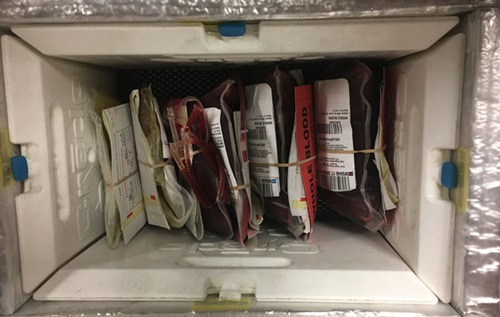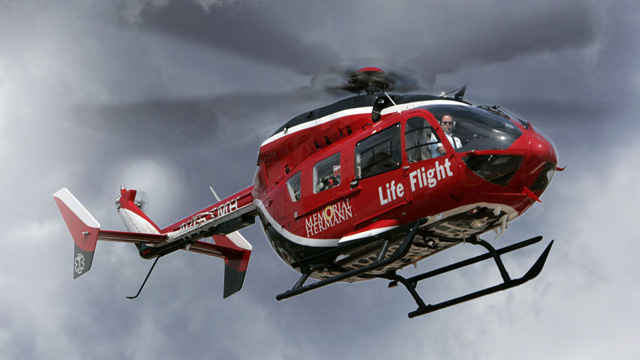
“Overall, we have seen that whole blood transfusion is safe and has a better clotting ability and profile than component therapy in many instances,” said Bryan Cotton, MD, a professor in the Department of Surgery at McGovern Medical School at UTHealth and trauma surgeon affiliated with Red Duke Trauma Institute at Memorial Hermann-Texas Medical Center.
Red Duke Trauma Institute and Memorial Hermann Life Flight® are among the first trauma care providers in the country to use whole blood transfusion in addressing severe blood loss in emergency settings.
Changing the Course of a Bloody History
Whole blood transfusion was all but forgotten in trauma care in favor of component transfusion therapy during the last four decades. However, component therapy, which administers parts of blood, like plasma, platelets and red blood cells, on their own or combined in a specified ratio, was not always the de facto transfusion option. The shift from whole blood transfusion to component therapy for those suffering massive blood loss began in the 1970s, despite a lack of evidence supporting the latter’s superiority in emergency situations.
Recent evidence-based findings and the documented success of whole blood transfusion in military settings have prompted leading trauma care providers like Life Flight and Red Duke Trauma Institute to take another look at the classic lifesaver.
Red Duke Trauma Institute and Life Flight have been using primarily Type O-negative whole blood for transfusions in emergency situations since November 2017 and have not seen adverse patient reactions.
“As patients receive whole blood pre-hospital, they receive less blood upon admission to the hospital or operating room, which means earlier homeostasis,” said Joseph Love, DO, vice-chair for surgical education at McGovern Medical School and medical director for Life Flight.
Research Rediscovers a Whole Solution
Dr. Cotton is the lead author of a study published in 2013 in the Annals of Surgery detailing the world’s first randomized trial of whole blood, and its success in stopping bleeding quicker and reducing the amount of blood required for severely injured patients. The study is part of a growing body of empirical evidence supporting the use of whole blood in emergency settings.
That’s not to say component therapies are no longer needed. Component therapies will continue to have their place, like using packed red blood cells for patients with sickle cell disease, but the use of whole blood has been shown to mitigate some of the risks present with component therapy.
“Most trauma patient deaths following component transfusion can be attributed to one part of the trauma lethal triad: coagulation issues, acidosis or hypothermia,” said Life Flight Chief Flight Nurse Rudy Cabrera. “Whole blood combats all three of those reactions.”
In addition to providing the best patient outcomes, data is collected for each use of whole blood in an effort to advance its use and establish best practices.
“Our goal is to show the importance of whole blood and make it the gold standard for EMS and pre-hospital providers to administer it,” Dr. Love said.
Red Duke Trauma Institute Newsletter Sign Up
Use the form below to sign up to receive our Red Duke Trauma Institute Newsletter with helpful articles about our services, case studies relevant to clinical protocols practiced on a daily basis, information about available educational opportunities and many other updates for health care professionals and first responders.
You!
Thank you for subscribing to the Trauma eNewsletter.

Donate to Red Duke Trauma Institute
Please consider making a donation to the Red Duke Trauma Institute at Memorial Hermann-Texas Medical Center. No matter which area of the mission you support, your gift will make a lasting impact on patients and their families.
Donate Now